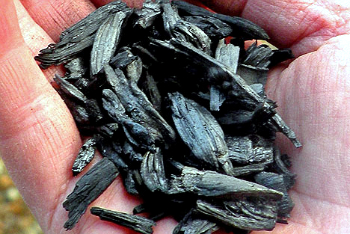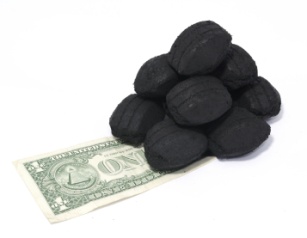The massive climate and energy bill now working its way through Congress would create a multi-billion-dollar market in carbon offsets, giving owners of agricultural and forest land the opportunity to profit as companies seek to offset their carbon emissions.

One open question about carbon offsets is how will they be evaluated to ensure carbon is indeed being sequestered. (Courtesy verago79 via Picasa)
Offset quality — ensuring that an offset represents a genuine reduction in greenhouse gases — has been a lightning rod issue in the voluntary market that emerged in the United States over the past decade. The eventual settling upon multiple standards — while somewhat reasonable — has not helped to ease concerns.
Even though some of the standards for evaluating offset quality are stringent, the fact remains that the industry is unregulated, and that is enough to sow seeds of doubt. Exposés about perverse incentives, corruption, and lack of oversight in the international Clean Development Mechanism‘s compliance market has not helped the image of offsets. (The CDM was launched in 2006 under the international Kyoto Protocol as a way for regulated countries to reduce the cost of compliance by buying carbon offsets.)
“They’re just impossible to verify,” said Daphne Wysham, a fellow at the Institute for Policy Studies, an independent think tank based in Washington, D.C. “The problem is that you’re trying to prove a counterfactual. You’re trying to prove that something would not have happened but for this additional revenue stream.”
However, the fact that they were included in the House-passed American Clean Energy and Security Act is a good indication that they will be a part of potential federal legislation. The Waxman-Markey bill, as the legislation is widely known, stipulates that offsets should be verifiable, additional, and permanent.
 Special Series: What’s the deal with offsets?Photo illustration by Tom Twigg / GristIn addition to those attributes, quality offsets should also be “real” and “enforceable,” according to Josh Margolis, co-CEO of San Francisco-based CantorCO2e, a broker for the world’s emissions and environmental markets. “Those are [five] small words, but there have been tomes and tomes written on what that means,” he said.
Special Series: What’s the deal with offsets?Photo illustration by Tom Twigg / GristIn addition to those attributes, quality offsets should also be “real” and “enforceable,” according to Josh Margolis, co-CEO of San Francisco-based CantorCO2e, a broker for the world’s emissions and environmental markets. “Those are [five] small words, but there have been tomes and tomes written on what that means,” he said.
The other key element to achieving quality offsets is for regulators to monitor projects and enforce consequences against those who fail to comply, he said.
But whether a federal program will actually deliver quality is yet to be determined, and not just because the bill hasn’t yet passed the Senate. Michael Wara is a climate scientist and professor at Stanford Law School who has studied and written about offsets and climate policy. “You can say all that in the bill, and it all sounds great, but what really matters are detailed decisions made after [we have a law] by whoever is regulating this system,” he said. “The politics and who sits on the decision-making body and where their interests lie really matter.”
Current offset providers wonder whether voluntary and compliance markets would use the same standard.
“In the European market, there’s a set of standards applied to the voluntary market and a different standard for the compliance market,” said Erik Blachford, CEO of Terrapass, an offset provider. “I think that’s less likely to happen in the United States. I would guess there’s going to be convergence between the voluntary and compliance markets against a single standard.”
Offset provider Native Energy plans to comply with a federal regulatory standard for offsets that it would sell under the compliance market. But because the company believes that existing voluntary standards may be more stringent, it plans to continue offering offsets under those certifications to discerning clients. Terrapass’ Blachford said he would consider doing the same thing.
For the voluntary market, “the wise way to proceed would be to allow the kind of innovation that has occurred to continue to occur, and to create a business environment in which the kinds of co-benefits that some projects bring could be assessed and valued,” said Tom Rawls, spokesman for Native Energy.
But Stanford’s Wara doubts that offset providers will actually hew to a stricter certification once federal law creates a standard. Because the voluntary market is “essentially buyer beware,” companies spend a lot of energy, money, and time trying to ensure that their offsets are defensible, he said. “But once you get into a compliance-grade situation, all that matters is that USDA or EPA blesses the offset,” he said.
For evidence, he points to the international CDM. “You don’t see offset companies pushing for stricter standards. You see them complaining that the system is inefficient, leads to delays, and needs to be streamlined.”
As the world’s first attempt at a regulated offset market, the CDM is serving as an example to U.S. regulators, mostly in what not to do.
Reports from Wara and colleagues at Stanford and environmental activist organizations like Forests & the European Union Research Network (FERN) and International Rivers have highlighted some of the CDM’s failures: awards for projects already in progress; falsification of audit reports; manipulation of data upon which companies base credit claims. There are calls to reform or replace the CDM in the renegotiation of the Kyoto Protocol, the first phase of which ends in 2012.
Terrapass’ Blachford is willing to cut the CDM some slack. “Brand new things that are put together to tackle enormous problems take time to get right,” he said. “It’s like people looking at a Sony Walkman and wishing it were an iPod. You know, guys, progress takes time.”
Jake Schmidt is international climate policy director at Natural Resources Defense Council, which worked on the Waxman-Markey legislation as a member of the Climate Action Partnership, a coalition of business and environmental groups. He said there are indications that offsets under Waxman-Markey would be better than under the CDM.
“The Offsets Integrity Advisory Board and the final rules are established in a very different legal and political context than in the CDM,” he said. “The CDM has a 180 plus-country negotiation process with no Court of Appeals, no Supreme Court, and no agency overseeing the whole thing that has a single responsibility to protect the environment.” The U.S. legal structure will allow us to challenge bad rules and projects, he said.
Also, Waxman-Markey would allow for random audits of projects and has a mandated program review. “The CDM has some semblance of a random audit function now, but it didn’t at the beginning,” said Schmidt.
One particular challenge will be to effectively evaluate agriculture and forestry projects, which would be a much larger part of the offset market than they are currently.
Land use, land use change, and forestry (LULUCF) offset projects have long been sneered at because it is difficult to ensure that the carbon will be stored forever, a quality called permanence. Credits are issued based upon the amount of carbon stored in plants and soil. But that storage could be lost, or “reversed,” if, say, the trees burned or were infested with insects. LULUCF projects were excluded from the Kyoto Protocol for that reason and because activists feared they would give polluters an excuse to not clean up.
But now, new strategies are emerging to address risk to permanence. These include temporary credits, which expire and must be replaced with new credits; legal guarantees regarding management of the land; financial insurance to cover reversals; and buffer pools, which require that a portion of earned offsets be set aside in a shared pool to mitigate reversals.
Max Williamson is an environmental lawyer at Washington, D.C., law firm Andrews Kurth. He has lobbied legislators on behalf of the Carbon Offsets Providers Coalition, a group of offset providers, marketers, generators, and financiers. “Temporary credits are a new addition to the Waxman-Markey bill, which we are evaluating but at this time do not believe is necessary,” he said. “The other mechanisms for addressing the possibility of reversals are all legitimate policy options.”
Terrapass’ Blachford is also cautiously optimistic. “For quite a few years we didn’t see anything in the forestry world that met our basic philosophical approach to quality,” he said. “But now people are starting to do the appropriate thing with things like buffer pools, using those as an active insurance against natural disasters.” While Terrapass doesn’t yet have any forestry projects, it is now considering them.
But in spite of such advances in regulation, there are still plenty of concerns about whether offsets will be of high enough quality to actually reduce emissions.
“The hard part is that everyone recognizes there is an inverse relationship between quality and quantity,” said Stanford’s Wara. “But the political deal at the heart of this bill is dependent upon there being a lot of offsets. So there’s going to be a lot of political push to make sure that there are.”



